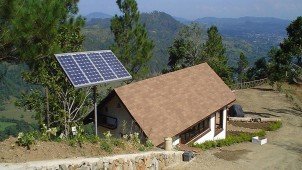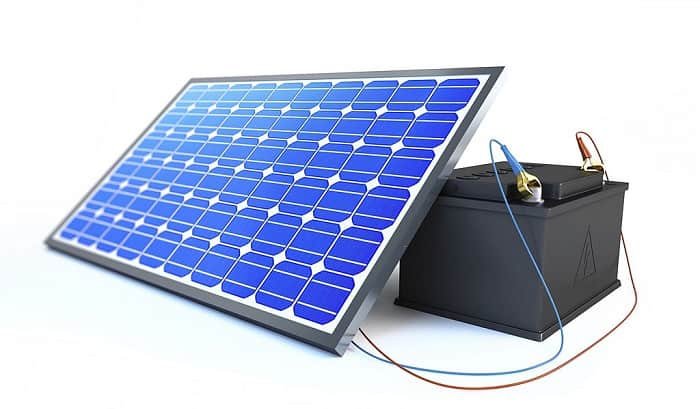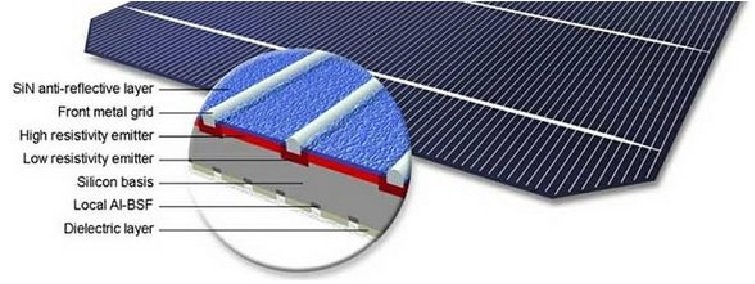
Elements of a photovoltaic solar system
A photovoltaic solar installation is an installation whose objective is the generation of electricity through solar radiation . Therefore, it is a renewable energy source .
The components of this type of installation will vary depending on whether it is a solar plant connected to the power grid or is an isolated solar installation. In any case, the difference between both systems is based on the management of the generated energy.
In isolated installations, the generated electrical energy can be used directly or stored in solar batteries. In the case of facilities connected to the network, the electricity generated is supplied to the general electricity network for distribution.
Common elements of a photovoltaic solar installation
Despite the differences between the facilities connected to the network and the autonomous facilities there are some common elements:
- The photovoltaic panels .
- The current inverters .
- Solar trackers.
- Electrical wiring
Photovoltaic panel
The photovoltaic solar panel is the element that captures solar radiation and is responsible for transforming solar energy into electricity through the photovoltaic effect . The photovoltaic panels are composed of solar cells .

The photovoltaic cell is the part of the photovoltaic panel responsible for transforming solar radiation into electrical energy thanks to the photovoltaic effect . The result is an electric current in direct current .
Generally, a photovoltaic solar module or panel consists of an association of photovoltaic cells . This association is encapsulated in two layers between a front glass sheet and a back layer of a thermoplastic polymer or other glass sheet.
The glass sheet is used when you want to obtain modules with some degree of transparency, usually this set of elements is framed in an anodized aluminum structure. The objective of this aluminum structure is to increase the mechanical resistance of the assembly and facilitate the anchoring of the photovoltaic module to the support structures.
The most commonly used photovoltaic cells in photovoltaic panels are silicon , and can be divided into three subcategories:
- The photovoltaic cells of monocrystalline silicon are constituted by a single crystal of silicon . This type of cells has a uniform dark blue color.
- The photovoltaic cells of polycrystalline silicon or multicrystalline are constituted by a set of crystal silicon , which explains its performance is somewhat lower than monocrystalline cells.
- Amorphous silicon cells. They are less efficient than crystalline silicon cells , but also less expensive. This type of cell is, for example, the one used in applications such as calculators or small devices that do not require a large amount of energy.
I power inverters
The inverter is an electronic device responsible for converting the direct current generated in alternating current .
The photovoltaic solar panel provides electricity in the form of direct current . This current can be transformed into alternating current by means of the current inverter and injected into the electrical network or into the internal network.
The simplified process would be as follows: Energy is generated at low voltages (380-800 V) and in direct current . It is transformed with an AC inverter into alternating current . In power plants of less than 100 kW, the energy is injected directly into the low voltage distribution network (400 volts in three phase or 230 volts in single phase). And for powers greater than 100 kW, a transformer is used to raise energy at medium voltage (up to 36 kV) and is injected into the transport networks for subsequent supply.
Solar trackers

Solar trackers are mechanisms that guide the position of photovoltaic panels depending on the position of the Sun to increase their performance. Its use is quite common in the production of solar energy.
Solar trackers allow solar production to increase considerably, around 30% for the former and an additional 6% for the latter, in places of high direct radiation.
There are solar trackers of various types:
- Solar trackers in two axes: the surface of the photovoltaic panel is maintained always perpendicular to the sun .
- Solar trackers on a polar axis: the surface of the solar panel rotates on an axis facing south and inclined at an angle equal to latitude. The rotation is adjusted so that the normal to the surface at all times coincide with the terrestrial meridian containing the sun .
- Solar trackers on an azimuthal axis: the surface rotates on a vertical axis, the angle of the surface is constant and equal to latitude. The rotation is adjusted so that the normal to the surface at all times coincide with the local meridian containing the sun .
- Solar trackers on a horizontal axis: the surface rotates on a horizontal axis and oriented in a north-south direction. The rotation is adjusted so that the normal to the surface at all times coincide with the terrestrial meridian containing the sun .
Electrical wiring
Electrical wiring is the element that carries electrical energy since its generation, for later distribution and transport. Its dimensioning is determined by the most restrictive criterion between the maximum potential difference and the maximum admissible intensity.
Òbviously, the dimensioning of electrical wiring is much greater in the case of solar installations connected to the grid, than isolated solar installations. In the case of isolated installations, it is only necessary to transfer the electrical energy locally, generally to the electric batteries .






